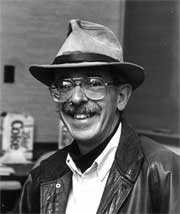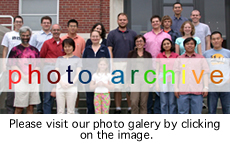
Mark S. Gordon
 Director, Applied Mathematical Sciences, Ames Laboratory
Director, Applied Mathematical Sciences, Ames LaboratoryDistinguished Professor of Chemistry,
Iowa State University,
Email: mark@si.fi.ameslab.gov
WWW: www.msg.ameslab.gov
Education
1963 B.S.-Rensselaer Polytechnic Institute, Troy, NY,
1967 Ph.D.-Carnegie-Mellon University (John A. Pople), Pittsburgh, PA,
1967-1970; Postdoctoral Research Associate, Iowa State University (Klaus Ruedenberg), Ames, Iowa,
2001 Fellow, American Physical Society
2003 Senior Fulbright Scholar
2004 Midwest Award, American Chemical Society
2004 Member, International Academy of Quantum Molecular Science
Research Interests:
Interests include the development and application of new methods in scalable electronic structure theory, especially for correlated and multi-determinant wavefunctions, and methods for studying environmental effects on reaction mechanisms, all in the electronic structure code GAMESS. The recent parallel developments include highly scalable methods for open and closed shell energies and gradients for second order perturbation theory, energies, gradients and Hessians for MCSCF wavefunctions, energies for multi-reference perturbation theory, and energies for coupled cluster methods. The interest in environmental effects has led to the development of the effective fragment potential (EFP) and the surface integrated molecular orbital molecular mechanics (SIMOMM) methods. The EFP approach, originally developed to provide an accurate potential for water, has now been extended so that one can automatically generate accurate and efficient potentials for any species. SIMOMM is an embedded cluster method for the study of surface science, including heterogeneous catalysis, surface growth, etching and surface diffusion. The common motivation throughout all of this research is to develop an understanding of the mechanisms of chemical reactions in ground and excited electronic states.Selected Publications:
M.W. Schmidt and M.S. Gordon, "The Construction and Interpretation of MCSCF Wavefunctions", Ann. Rev. Phys. Chem., 49, 233 (1998).
G.D. Fletcher, M.W. Schmidt, and M.S. Gordon, "Developments in Parallel Electronic Structure Theory", Adv. Chem. Physics, 110, 267 (1999).
M.S. Gordon, M.A. Freitag, P.Bandyopadhyay, V. Kairys, J.H. Jensen, and W.J. Stevens, “The Effective Fragment Potential Method: A QM-Based MM Approach to Modeling Environmental Effects in Chemistry”, J. Phys. Chem. (Feature Article), 105, 293 (2001)..


